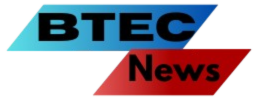Introduction
The Internet is evolving, and Web3 is leading this transformation. Unlike traditional websites controlled by centralized entities, Web3 introduces decentralization, transparency, and user ownership. One of the most significant advancements in this space is the rise of decentralized websites, which provide greater security, censorship resistance, and independence from traditional hosting services.
But what exactly are decentralized websites, and how do they compare to traditional ones? Let’s explore how Web3 is changing the future of online experiences.
1. What is Web3?
Web3 is the next phase of the Internet, powered by blockchain technology, smart contracts, and decentralized applications (DApps). Unlike Web2, which centralized companies control, Web3 shifts power to users.
Key Features of Web3:
- Decentralization – No single authority controls the network.
- User Ownership – Individuals control their data and digital assets.
- Smart Contracts – Automated agreements eliminate the need for intermediaries.
- Improved Security – Reduced risk of data breaches due to distributed storage.
2. What Are Decentralized Websites?
Decentralized websites run on blockchain-based hosting solutions instead of traditional centralized servers. They rely on technologies like IPFS (InterPlanetary File System) and blockchain domains (such as .crypto, .eth, .nft).
How They Differ from Traditional Websites:
FeatureTraditional Websites (Web2)Decentralized Websites (Web3)
Hosting Centralized servers (AWS, Google) Distributed via blockchain nodes
Domain Ownership Controlled by ICANN & registrars Owned permanently as NFTs
Security Vulnerable to hacking & censorship Resistant to takedowns & breaches
Data Control Stored and monetized by platforms Fully owned by users
Payments Banks, PayPal, credit cards, Cryptocurrency transactions
3. Why Are Decentralized Websites Growing in Popularity?
- Censorship Resistance – Governments or corporations cannot easily take this down.
- Greater Security – No centralized server means a lower risk of cyberattacks.
- User Ownership – Individuals own their content and domains, eliminating reliance on third-party services.
- No Middlemen – No hosting fees from traditional companies, reducing costs.
4. How to Build a Decentralized Website?
If you’re looking for a website developer in Guwahati or need an SEO-friendly website, Web3 development offers a new approach. Here’s how to get started:
✅ Step 1: Choose a Blockchain Domain
Instead of .com or .net, decentralized websites use domains like .crypto, .eth, and .nft, which can be purchased through Unstoppable Domains or Ethereum Name Service (ENS).
✅ Step 2: Use a Decentralized Storage System
Popular options include:
- IPFS (InterPlanetary File System) – A peer-to-peer network for storing and sharing files.
- Arweave – A blockchain-based permanent storage solution.
✅ Step 3: Build the Website Using Web3 Technologies
- Use HTML, CSS, and JavaScript for the front end.
- Integrate with Web3.js or Ethers.js for blockchain interactions.
- Deploy smart contracts using Ethereum, Solana, or Binance Smart Chain.
✅ Step 4: Optimize for Web3 SEO
Although decentralized websites aren’t ranked traditionally by search engines, they can be optimized for visibility within Web3 communities:
- Use metadata optimized for blockchain search engines.
- Promote content on decentralized social platforms.
- Leverage crypto-based advertising to attract visitors.
Decentralized hosting offers a fresh alternative for businesses looking to create an SEO-friendly website for the Web3 era.
5. Challenges of Decentralized Websites
While Web3 websites bring innovation, they also face some limitations:
🔻 Limited Adoption – Still a niche technology with a smaller user base.
🔻 Technical Complexity – Requires blockchain knowledge for setup and maintenance.
🔻 Search Engine Visibility – Traditional search engines don’t fully index them yet.
🔻 Gas Fees – Updating website content can involve cryptocurrency transaction fees.
Despite these challenges, Web3 technology rapidly evolves, making decentralized websites more accessible and user-friendly.
6. The Future of Web3 and Decentralized Websites
- More Businesses Shifting to Web3 – Companies are exploring blockchain for increased security and transparency.
- Better SEO for Web3 – Search engines may begin recognizing decentralized sites.
- Integration with AI and VR – Web3 sites could support immersive digital experiences.
- Web3 Payments – More businesses will accept cryptocurrency for transactions.
For those looking for an SEO-friendly website built with the latest technology, exploring Web3 is a forward-thinking option.
Conclusion
Web3 and decentralized websites are redefining the Internet by offering greater security, user ownership, and resistance to censorship. While they are still in their early stages, the growing adoption of blockchain technology signals a shift towards a more open and user-controlled web.
As businesses and developers explore Web3, the Internet of the future may look very different from what we know today. The question is—are you ready for the shift?

